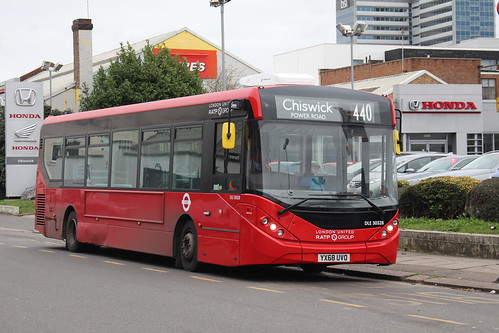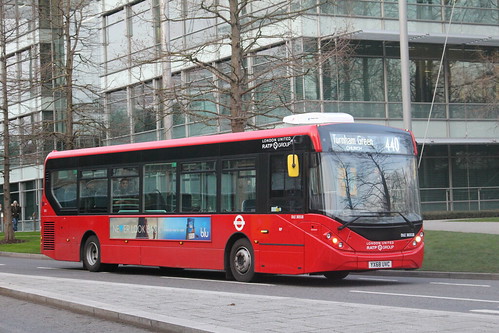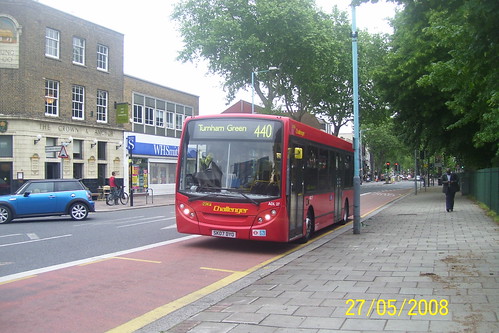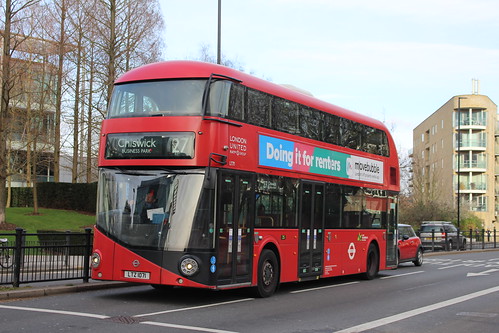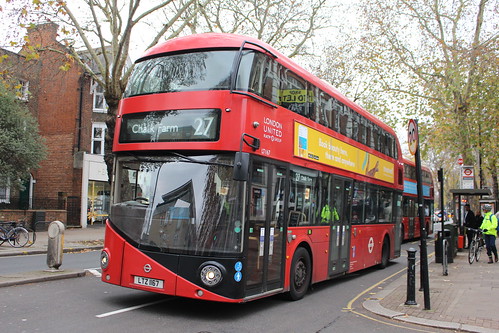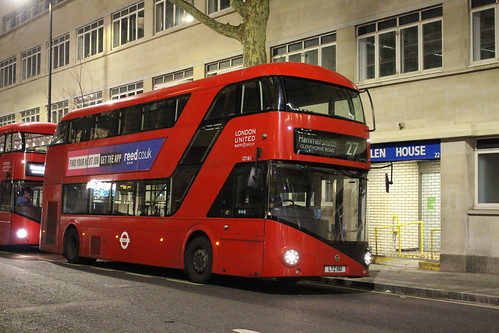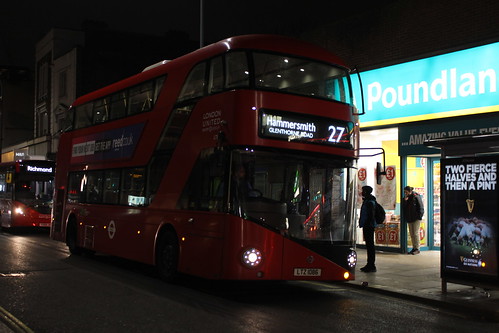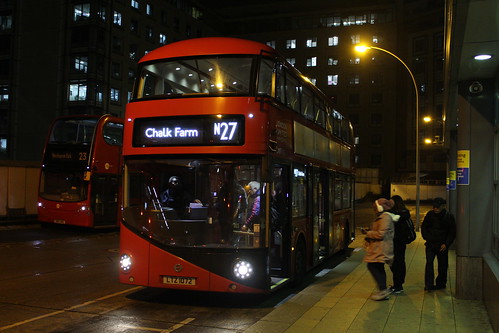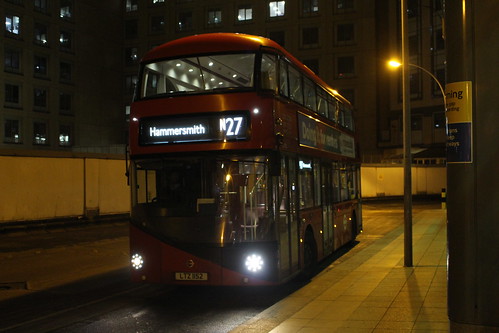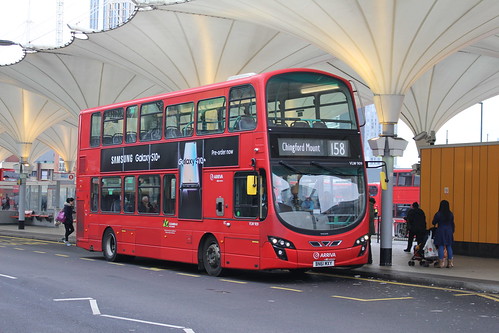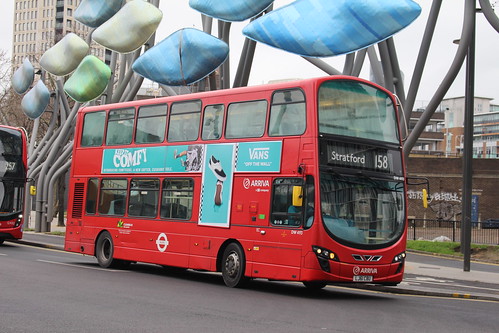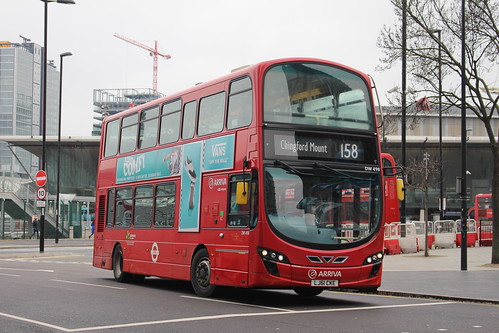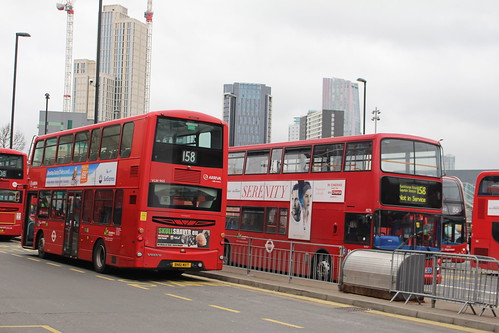The Gospel Oak to Barking line is part of the London Overground network which runs between, yes you guessed it, Gospel Oak and Barking. More commonly however, this line is referred to as the GOBLIN, and even has their own Users Group; The Gospel Oak to Barking Rail User Group (BGORUG). The line passed from Silverlink Metro to London Overground in 2007, originally using the former operator's 2 car Class 150-1 units. The line was unique being the only LO line that was not electrified either via third rail DC current or overhead AC wires. New rolling stock arrived in 2010, 2-car class 172-0 Turbostar DMUs.
 |
| 172001 at Leyton Midland Road, prior to electrification of the line © Tommy Cooling |
 |
| 172003 at Leytonstone High Road, on the last day before the line closed for electrification works in June 2016 © Tommy Cooling |
Within a short time frame, the London Overground success story was beginning to act as a downfall, with passenger loads rapidly increasing to beyond levels sustainable by the line's 2-car units. Plans were afoot by 2013 to increase the capacity on the line to 3-car or 4-car diesel trains, however these plans were superseded by Government plans to electrify the line throughout with brand new 4-car electric trains (class 710s). Electrification work began in 2016, and was due to be completed by 2017, however complications during these works saw the project overrun by a year, and costs escalate. Full line electrification was achieved by 2018, a year behind schedule, the brand new class 710 units, ordered in 2015, were also delayed. The units were due into service in 2017, however this was pushed by to 2018 by which time the delayed electrification project would be complete. Despite this the trains were not delivered until November/December 2018, nearly 18 months later than first planned.
 |
| 172007 under the wires at Upper Holloway https://www.flickr.com/photos/127662272@N07/46269365944/in/album-72157650255683791/ © Tommy Cooling |
The complications began when the existing class 172 units were earmarked for West Midlands Trains for their May 2019 timetable change, following the end of lease with TfL in May 2018 [on the basis that the 710s would be in service]. With no immediate chance of ANY class 710s being accepted by London Overground, drivers trained, and units passed fit for service before the class 172 lease expired, TfL took out a further sub lease on the units, from West Midlands Trains (WMT), keeping them until mid-March 2019. However, as these units required refurbishment and extensive internal modifications to retro-fit toilets, for use with West Midlands Trains, some of the line's eight units, would need to be 'handed back' to the leasing company prior to this date. The first unit went early on leaving the line, which requires six trains for a full service, with only only one spare. This also saw the morning extra service, which required the seventh unit, removed from the timetable, on the basis that only six trains could be used at any one time.
January saw no progress in the readying or the likelihood of acceptable by London Overground of the 710 units. It was at this point when the second 172 returned to WMT, leaving the line with no spare units. Inevitably, with little to no significant upkeep taking place on the remaining units, the prevalence of train faults and cancelled services increased. With the late January/early February cut-off approaching for half of the remaining six 172 units to go back to WMT, an emergency stop-gap measure was needed to prevent the line losing any further services. This solution was to use three shortened class 378s, taken from the fleet's refurbishment process and one other spare unit. Three class 378s (which had been lengthened from 3-cars to 4-cars, then 4-cars to 5-cars) were shortened from 5-cars to 4-cars, the same length as the new class 710s on the GOBLIN. This meant they would easily be able to operate using the existing class 710 platform stopping markers. The first of the three units, 378232 entered service in late January, followed by two further units in February to replace a 172 that went off lease at the same time. The other two shortened 378 units are 378206 and 378209.
 |
| 378232 was the first electric passenger train in service on the GOBLIN https://www.flickr.com/photos/127662272@N07/46269365784/in/album-72157650255683791/ © Tommy Cooling |
During late winter, class 710 units made late night trips over the GOBLIN to increase their fault free test running. By late February and into March, passengers were greeted to their first glimpses of 710s running on the GOBLIN in daylight hours, as train testing was vamped up.
Where are we now?
As things currently stand services on the GOBLIN have been reduced by 50% with one electric 378 every 30 minutes following the end of the sub-lease of the final three 172 units from WMT. On most days there are up to two electric 710 units testing on the line. These generally fall into the other paths that would have been operated by passenger services; a situation that would be very frustrating for a passenger facing a long wait for the next train. Overall train capacity on the line, as TfL seem to proudly claim, has not changed, with six 2-car 172s have been replaced by three 4-car 378s, still offering 8-cars per hour. The only difference being the intervals between have increased 100% from every 15 minutes to every 30 minutes.
There is still no indication yet as to when the GOBLIN saga will finally be over, however most will feel and are hoping, that the end is in sight.
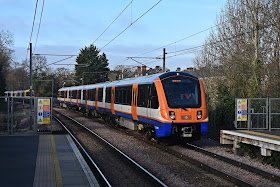 |
| 710269 at Brondesbury on a testing and training run https://www.flickr.com/photos/127662272@N07/32491255047/in/album-72157650255683791/ © Tommy Cooling |
Where are we now?
As things currently stand services on the GOBLIN have been reduced by 50% with one electric 378 every 30 minutes following the end of the sub-lease of the final three 172 units from WMT. On most days there are up to two electric 710 units testing on the line. These generally fall into the other paths that would have been operated by passenger services; a situation that would be very frustrating for a passenger facing a long wait for the next train. Overall train capacity on the line, as TfL seem to proudly claim, has not changed, with six 2-car 172s have been replaced by three 4-car 378s, still offering 8-cars per hour. The only difference being the intervals between have increased 100% from every 15 minutes to every 30 minutes.
There is still no indication yet as to when the GOBLIN saga will finally be over, however most will feel and are hoping, that the end is in sight.
Post by Tommy Cooling
Some of these images and more can be found on my Flickr page:
Please do not reproduce any of my images without permission


